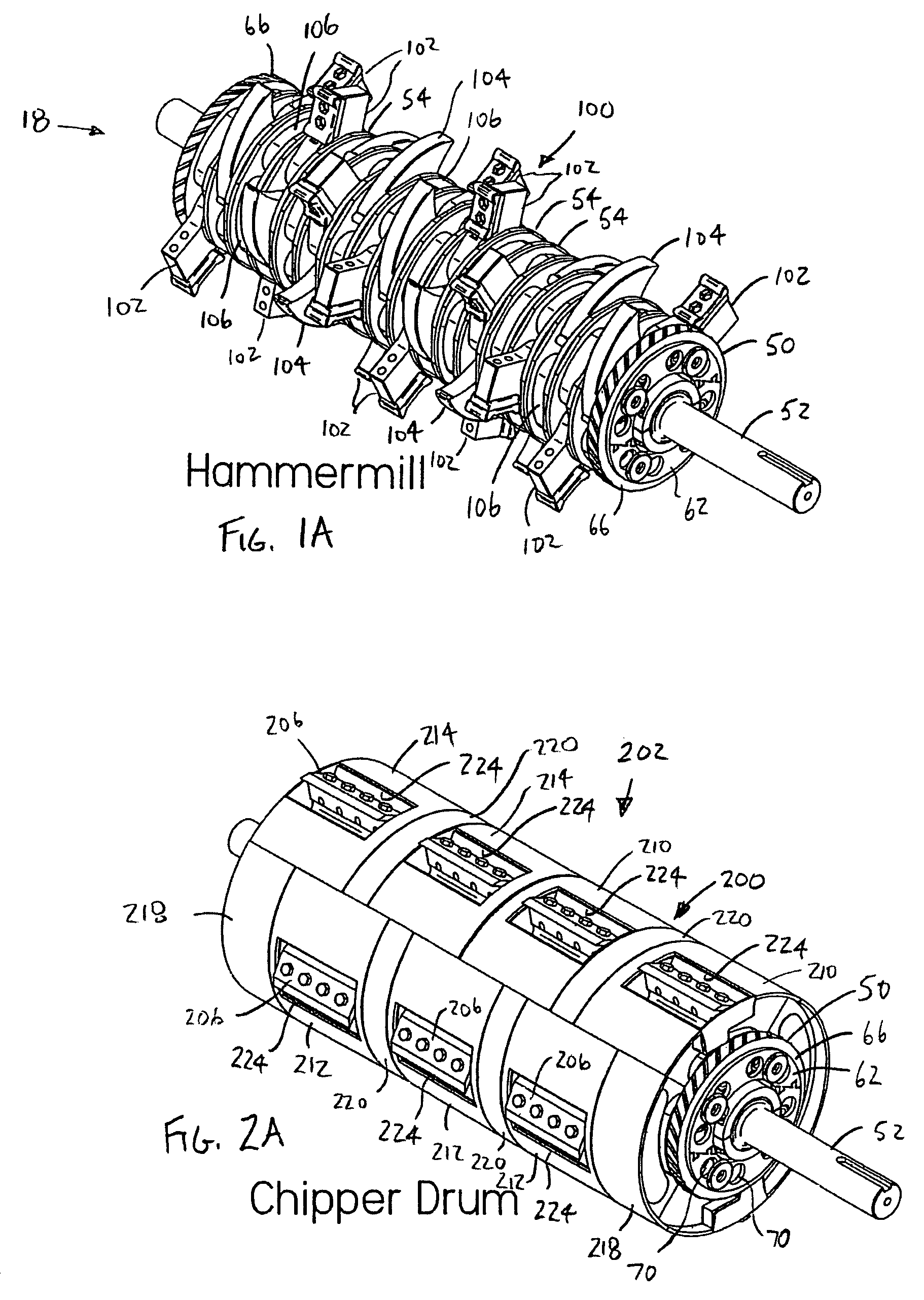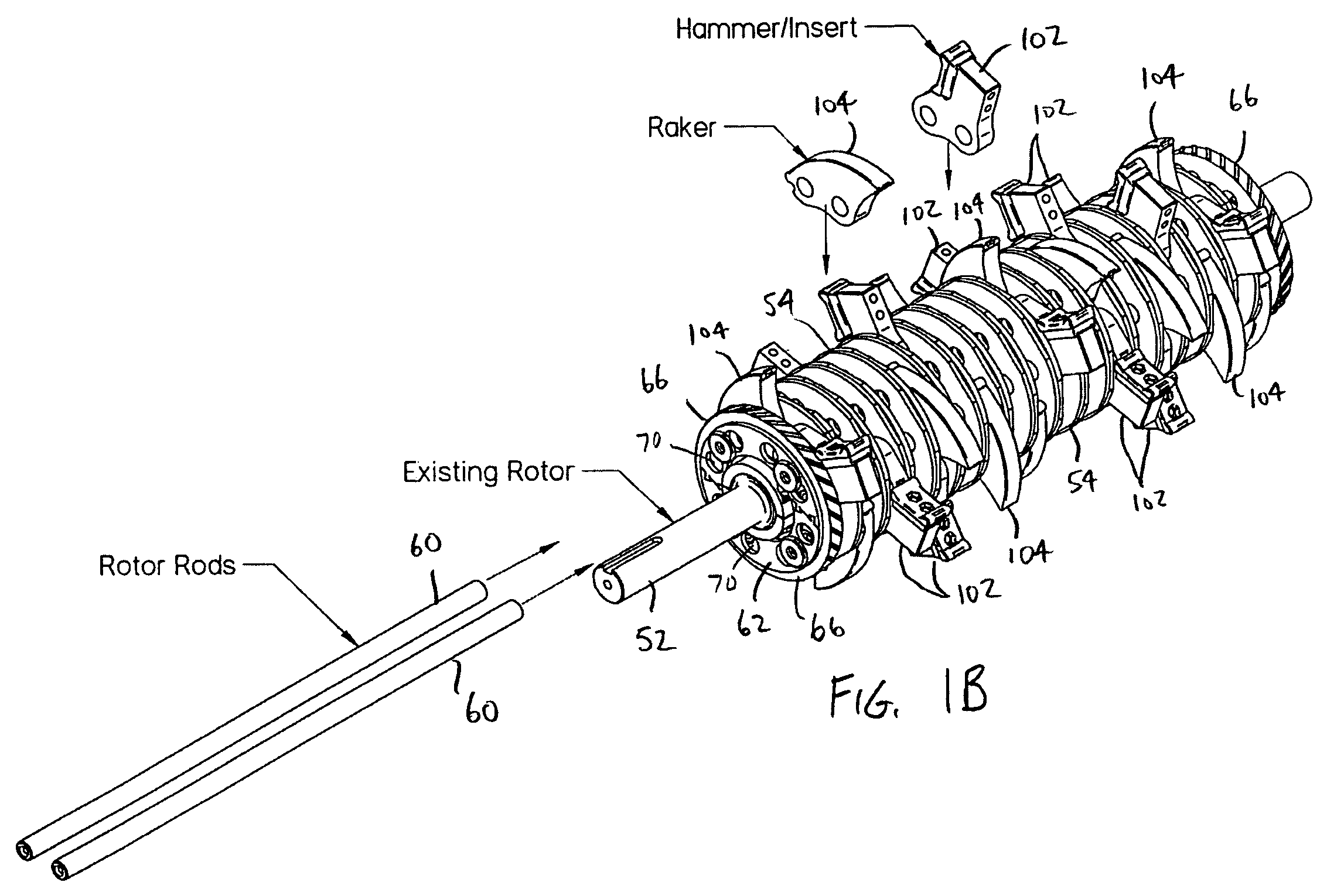Interchangable chipper inserts for wood grinder
a wood grinder and insert technology, applied in the field of wood reduction machines, can solve the problems of not all wood waste is suitable for the production of wood chips, the equipment for wood reduction is rather expensive, and many wood waste processors may not be able to afford both wood grinders and wood chippers, etc., to achieve the effect of simple and effective structure, limited labor and cost, and easy fitting
- Summary
- Abstract
- Description
- Claims
- Application Information
AI Technical Summary
Benefits of technology
Problems solved by technology
Method used
Image
Examples
Embodiment Construction
I. Overview
The present invention is directed to chipper inserts that permit a hammermill rotor (See FIGS. 1A and 1B) to selectively function as a chipper. The chipper inserts may be fitted onto a rotor in place of the hammer inserts to provide a chipper drum (See FIGS. 2A and 2B). For purposes of disclosure, the present invention is described in connection with illustrations of a specific wood reduction apparatus having a “stacked-plate” rotor (See FIG. 3). The present invention is not limited, however, to use with stacked-plate rotor, but instead is suitable for use with essentially any rotor capable of receiving interchangeable chipper inserts.
In the illustrated embodiment, the rotor 50 generally includes a shaft 52 carrying a plurality of stacked rotor plates 54 and spacers 56 (See FIGS. 3A and 3B). The rotor plates 54 have a substantially greater diameter that the spacers 56. The rotor plates 54 and spacers 56 alternate along the shaft 52 to provide a plurality of annular slots ...
PUM
| Property | Measurement | Unit |
|---|---|---|
| angle | aaaaa | aaaaa |
| angle | aaaaa | aaaaa |
| angle | aaaaa | aaaaa |
Abstract
Description
Claims
Application Information
 Login to View More
Login to View More - R&D
- Intellectual Property
- Life Sciences
- Materials
- Tech Scout
- Unparalleled Data Quality
- Higher Quality Content
- 60% Fewer Hallucinations
Browse by: Latest US Patents, China's latest patents, Technical Efficacy Thesaurus, Application Domain, Technology Topic, Popular Technical Reports.
© 2025 PatSnap. All rights reserved.Legal|Privacy policy|Modern Slavery Act Transparency Statement|Sitemap|About US| Contact US: help@patsnap.com



